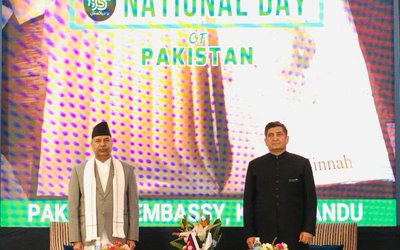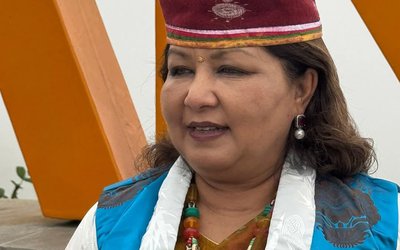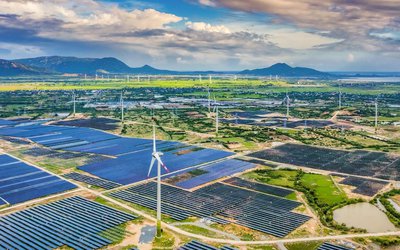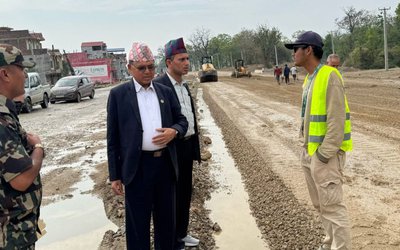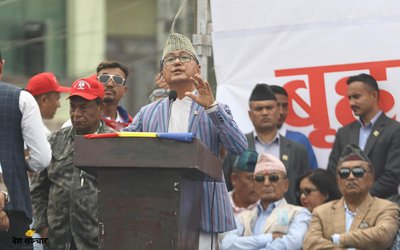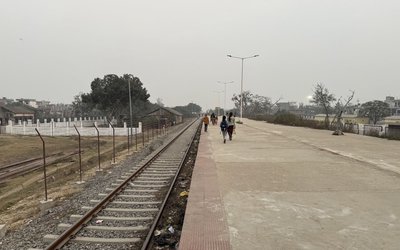
In the coming years, the world is about to face one of their greatest challenges in terms of water supply and energy demand. The role of water vis a vis energy does not have to be complementary rather if we play the cards right it could provide all the basic needs for everyone in addition to environment sustainability. However, in the South Asian or South East Asian context when all the development I/NGOs deliberate on the energy crisis to provide for the economic growth of over 1.74 billion on South Asia (World Bank 2016) & 665 million in South East Asia (IMF 2017) they always refer to the ‘water potential’ of the region in terms of hydropower development. Further the World Energy Outlook (2004) has also stated that the link between per capita energy consumption and the Human Development Index (HDI) is sturdy, therefore higher HDI equals higher energy per capita usage especially in the poor developing countries. It is prevalent for non- OECD nations with a HDI score of less than 0.8, as a score of higher than 0.7 is achieved by very few nations with a per capita energy use of lower than 2 tonnes of oil equivalent.
The main objective of this paper is to spotlight the fundamental delinquency by large hydropower dam development vis ecosystems.
Nepal is a founder member of the SAARC group of nations that have been the proponents of hydropower development in the region. It has been long-established as a nation with ‘the second largest water resources after Brazil’. Per the International Commission on Large Dams there are in existent 5,300 dams in the South Asia with further 400 proposed for construction. Therefore, it would not be surprising when enquired with any educated – but not well researched – person from an urban or rural centre regarding Nepal’s energy and it will always be a case for hydropower and therefore complemented by, ‘Nepal is the second largest water resources rich nation after Brazil!’ With the availability and accessibility to data these days one would want to know the validity of such a blatant declaration. Thus, after further research into this statement it was found that the list of ranking was made public by the Food & Agriculture Organization (http://www.fao.org/docrep/005/y4473e/y4473e08.htm) also published by a Pritush on May 31st 2013. For all these decades, the Nepalese people and the government have been proudly flaunting a non – existent data. Moreover, its consequences on availability of water resources from construction of large scale dams will be dire in the future due to climate change.

Nepal’s water resources have always been associated with energy production and hydropower development. Much like the earlier statement the next statement – that is well versed - has been ‘Nepal possesses an energy production capacity of 84,000MW of which 43,000MW is economically viable’. The IHA (International Hydropower Association) (http://www.hydropower.org/country-profiles/nepal) supports this data therefore it must have some amount of research to back this up.
On the flipside that is swept under the carpet by the developers & investors of large dam construction is the immense destruction to the river ecosystem and to the socio-economic livelihoods of communities who depend on the river. Not to mention the water treatise that always invites discontentment and suspicious behaviour between the parties (nations).
The Mekong river in South East Asia presents a valid case for the destruction from these hydropower dams to the river ecosystem. The river travels a total distance of 4,350 km from its origination in Lasagongma Spring, in China and finally drains in Vietnam with a total drainage of 475,000 km3. Several constructions of dams along with the proposed dam projects is expected to cause environmental chaos both in the upstream and downstream region of this majestic river. The People’s Republic of China has initiated the upstream constructions of these dams and (also referred to as lower Mekong) the Governments of Thailand, Laos PDR, and Cambodia have taken the initiation as downstream riparian rights. One of the most controversial of these projects for energy development has been the Xayaburi dam located at Xayabouri province in northern Laos PDR. Where International Rivers has estimated that the migrating routes for 23 – 100 species of fishes will be effected along with the endangered Mekong Catfish.
Among the Himalayan region nations’, Nepal has been categorized as a LDC (Least Developed Country). The access to electricity is one of the key components of to increase HDI (Human Development Index) and graduate to a ‘developing’ country status. Its development in region has seen no bounds in recent times with many private public private partnerships engaged to establish large scale dams. Surely, as a planner you will never be able to fulfill the potential of exploiting the 84,000MW; imagine the environmental & socio-economic consequences of damming all the rivers in the nation? Since hydropower is also classified as a renewable energy and a potential to exporting electricity from Nepal, there seems no end in sight in damming all the rivers of Nepal. However, what the policy makers do not realize is as per a new study these large hydropower dams are also a main source of CH4 (Methane) that contributes 1.3 % of the total GHG. This number does not seem significant when compared to other sectors like energy, agriculture and transportations sectors, but when we consider the ecosystem destruction to the rivers it is a noteworthy data. Moreover, CH4 is considered 34 times more potent to a similar quantity of C02 it does provide for a bleak picture of our global warming. Additionally, John Harrison, PhD (2016) a Biogeochemist from the Washington State University studied that each square meter of a reservoir surface liberates CH4 25 % more into atmosphere than previous estimates. Additionally, his report states that the GHG production activities also include the agriculture sector namely rice production from inundating the field. Currently IRRI (International Rice Research Institute) are researching into improved varieties of seeds that do not require soil inundation. Therefore, similar research must be conducted to produce electricity from hydropower which does not impact the environment need for water resources. Further, in an article by Bobby Magill (2012) it was estimated that when 6,000 cows do what they do daily i.e. belching & being flatulent for a whole year that is the equivalent of CH4 released by one reservoir based dam on the Ohio river. As per the Global Reservoir and Dam (GRandD) (2011) there are almost 500 such dams – that produces the equivalent CH4 from cows - only in South Asia. Thus, imagine the total CH4 being emitted through all these dams combined (not to forget our global total from dairy cows) in a year.
Nepal does not have to depend on large hydropower dams for its energy demands there are several alternatives likes pico or micro hydropower, wind, and more importantly solar energy to meet its energy demands in the future. Per the study by Adhikari, Gurung, Bhattarai (2012), of Institute of Engineering, Tribhuvan University Nepal receives sunshine for 300 days of the year with an average insolation period of 4.7 kWhm-2 day-1 (=16.92 MJ/m2 day). Additionally, the same study found that Nepal solar energy potential was higher than Lao PDR (4.38kWh/m2 day (15.8 MJ/m2 day)). Some of the sites for a potential for solar energy from the study were Jumla, Simikot, Pokhara, Lukla and Biratnagar that were located from West to East respectively thus providing centers for solar energy production that can complement other energy productions of Nepal’s five Development Regions – Far West, Mid – West, West, Central, & East. The other alternative for energy production in Nepal are micro hydro(MHP) or pico hydro. One of the benefits of these types of project that no one highlights per the Nepal MicroMini Hydropower Development Association (NMHDA) is the potential for domestic production of all the equipment (except for generator and valve) for installing the micro/pico hydro plants. NMHDA also states that till July 2011 22 MW of electricity generation had been contributed by micro and pico hydro this constituted 5‐100 kW by 999 Micro hydro & 1480 up to 5 kW by Pico hydro. This has amounted to only 200,000 households in the country but not enough is being done by the Government of Nepal to promote these type of small hydropower plants that have a relatively small environment footprint. The MHP also has a coverage of 60 districts from the 75 districts in Nepal and furthermore since it does not require any reservoirs going forward there is expected to be less transboundary water management issues in a Federal Nepal.
Nepal does not have to depend on reservoir based dams for hydropower production No country wants to be categorized forever as a LDC, and when HDI is directly related to per capita energy consumption all the countries do whatever they can to produce as much energy as they possibly can. During this production phase, no one really considers the environment impacts. The pico and micro hydro projects have little carbon footprint compared to its reservoir based brethren. In addition, it does not obliterate the river ecosystem by damming them all over the place therefore rural communities can benefit from energy and from the blue economy. They say do not put all your eggs in one basket, with the development of reservoirs based hydropower the Government of Nepal is exactly doing that by depending too much on it for energy production.
Nirendra Basnet
He is studying in Asian Institute of Technology. He can be reached at nirendra1.basnett@gmail.com
- Can Dustbins Provide Progress?
- Aug 13, 2017
- The Urban Nexus
- Jul 03, 2015
- Springs and Ponds – Viable solutions to the water crisis
- Dec 13, 2013
- Nepal’s Alarming and Unsustainable Fossil Fuel Addiction
- Apr 14, 2013



